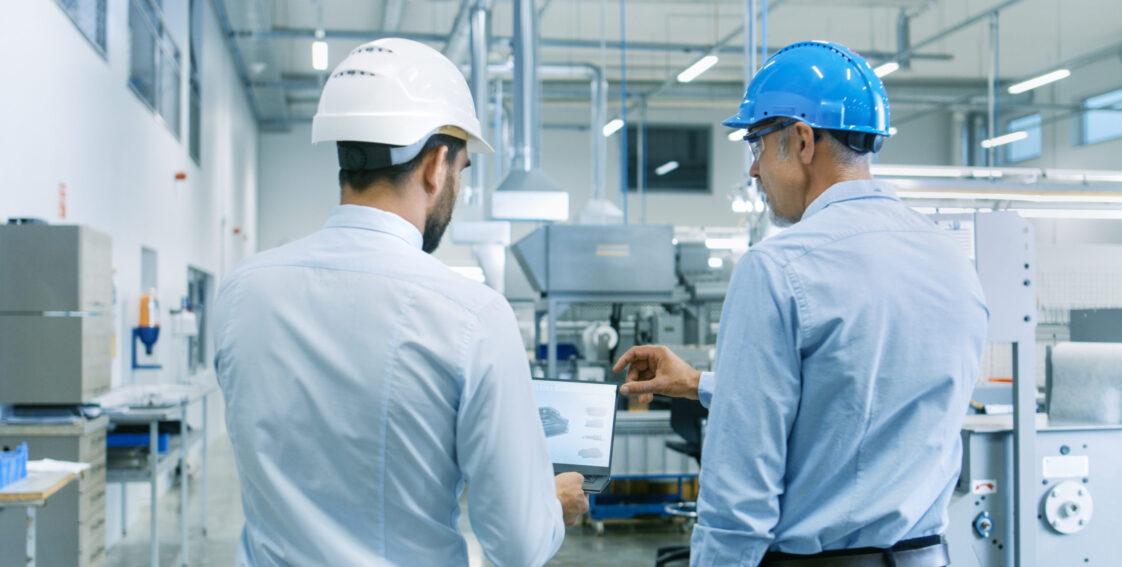
Automate your industrial process and expand your manufacturing capabilities with industrial robots. Explore the key benefits of industrial automation and some common factors to compare as you search for the optimal robot for your industry and manufacturing process.
What Is Industrial Automation?
Industrial automation brings the efficiency of robots along with other automation components linked by computers to improve your manufacturing process. From a single stand alone SCARA robot to a full line of integrated 6 axis robots, an industrial automation offers you the following opportunities:
- Reduce operating costs
- Improve productivity
- Reduce safety concerns
- Improved Quality control
- Greater flexibility of process flow and part variants
These features are most prominent when you compare an automated line with a manual one. They are also present, however, when you compare one type of industrial automation with another.
You can only enjoy these benefits if you choose the right industrial robot for your particular application. Review the differences between common industrial automation strategies to find the best option for your facility.
How To Choose the Right Industrial Robots
While there are a number of design differences between various industrial robots, the best way to choose the optimal robot design is to consider your application. Your chosen workpiece and desired industrial process may only be achieved or may be achieved more efficiently, by a particular type of robot.
The main types of robots, SCARA, 6 axis, Cartesian, Delta and Collaborative all offer distinct advantages in one or more areas. Consider each type as you find out how they perform in the following areas.
Load Capacity
You need to know how much your robot can lift also known as payload. The payload should be considered as the part weight and also the weight of the robot tooling. If there are forces seen by the robot as a part of the automation process this is similar to weight and inertia factors.
Most standard designed 6 axis and SCARA robots have limited load capacities which can be found in their product specifications. Gantry type cartesian robots are more designed at the component level for the application weight so they can be a good design for heavy lifting and long distance or large work areas. This style of robot has the highest load capacity, but you still need to review other considerations listed below.
Environment
The environment dictates both the physical space available for your robot and the level of protection necessary. Failure to take the realistic needs of robot area and protection into account can create problems during implementations and survivability of the robot itself. CAD layouts are the best way to evaluate the work area. The CAD files should accurately represent the machine design or work area in a facility and include obstructions such as building beams, utilities, and areas needing access.
Some robots such as Cartesian Gantry robots require an overhead structure while other robots use a single floor pedestal mount or are table mounted designs. Most robots have environmental ratings which can be found in their specifications and define their environment survivability these considerations are especially important when the environments are either hostile or sterile.
Orientation
Review and optimize the orientation of your manufacturing process equipment so to allow the robot to reach all of the process points as a part of your industrial automation solution. once again CAD layouts of the machines and robot with work area is the best way to do this. A 6 axis robot offers incredible flexibility to twist, swivel and maneuver tooling around. However, there is a limit to the flexibility of the joints within a work envelope so its best to review the joint motions relative to the process points or have a simulation done to confirm reaching all of the points, this is a good practice for robots of all types.
Speed and Distance
SCARA robots and Delta robots offer incredible speeds and accuracies, Other robots, like Cartesian Gantry options and 6 axis robots, offer more limited speed performance but a greater work areas and payload capability. Carefully review the work area, process sequence and desired cycle time of your application and select a robot which has specifications to meet the needs of your application, be conservative on your assumptions in order to arrive at a successful automated manufacturing process.
Duty Cycle
The duty cycle describes the percentage of time a robot is under % load versus the time it’s off. Every industrial automation system which uses robots should consider the duty cycle of the robot choice. Most often the robot will be set at a speed just slightly faster than the manufacturing process needed and allow for a brief stop and wait. Some robots are built for higher duty cycle or users opt for a larger payload to reduce the % load while moving faster.
So the duty cycle percentage depends not only on the robot you choose, but the load, speed, distance and other factors. Consider both your equipment and your manufacturing process before calculating the duty cycle. This will give you a clear idea of the efficiency and maximum capabilities of your chosen robot.
